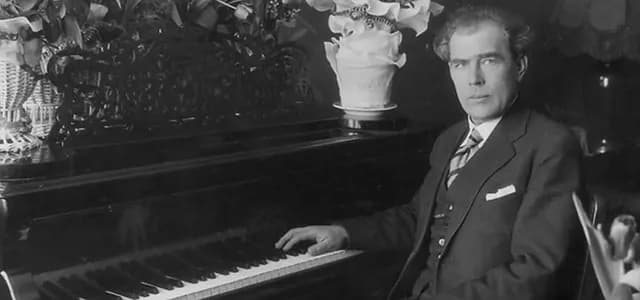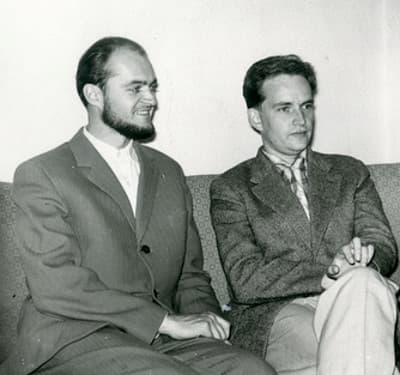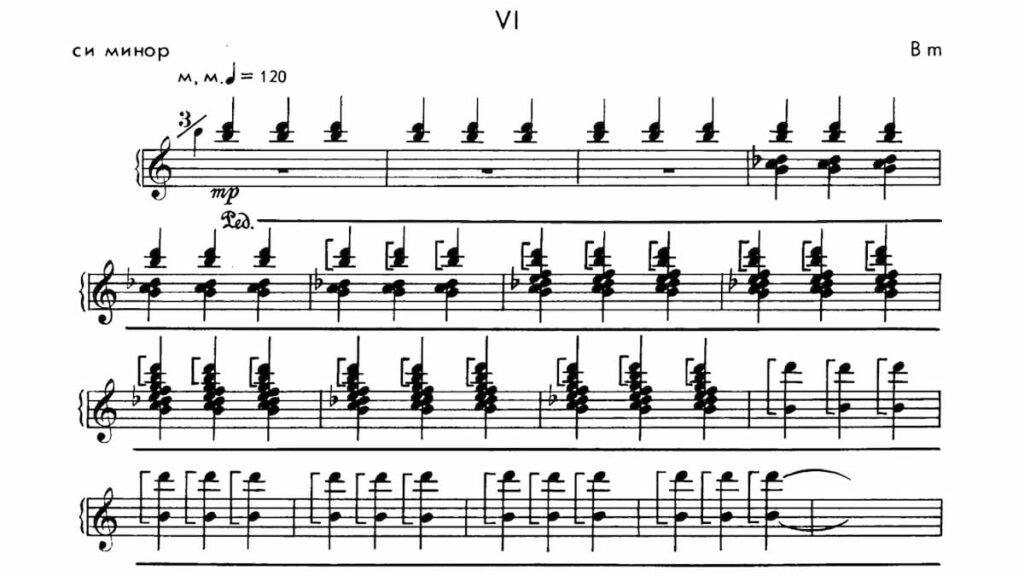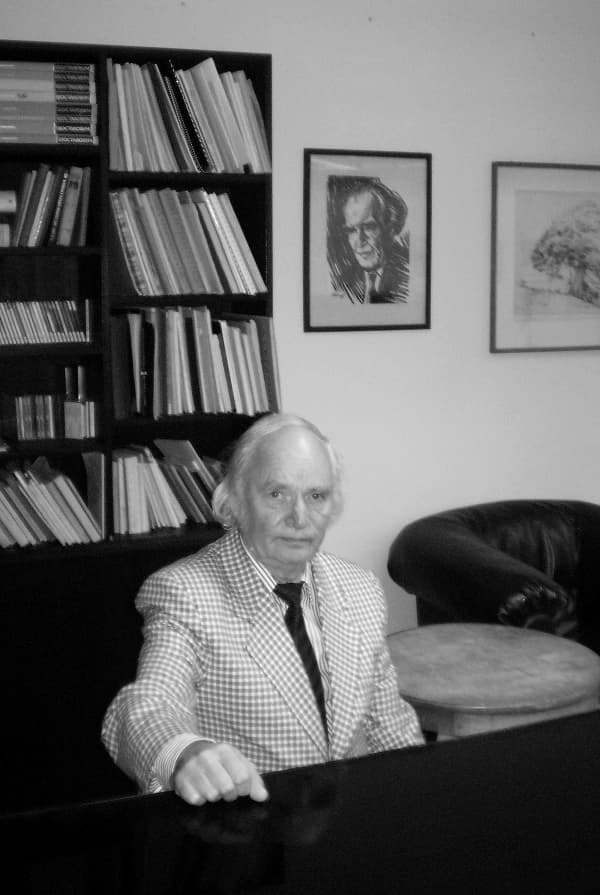Born on 15 October 1932 in Tartu, Jaan Rääts was one of the reformers of Estonian music. Rääts was part of a new generation of composers that brought Estonian music into the modern mainstream. Embracing the styles, philosophies and techniques popular among Western postwar composers, Rääts abandoned traditional musical language and embraced a neo-classical style characterized by active motor rhythms. On the occasion of his birthday on 15 October, we thought it might be fun to explore the compositions of this musical iconoclast.
Jaan Rääts: Concerto for Chamber Orchestra
Tartu and Tallinn

Jaan Rääts © Harri Rospu
Tartu is the second largest city in Estonia after Tallinn, and it is often considered the “intellectual capital city” of the country. It is home to the nation’s oldest and most renowned university, and the birthplace of the Estonian Song Festivals. Growing up in Tartu, Jaan Rääts attended the Tartu Music High School and studied piano with Aleksandra Sarv. He went on to the Tallinn Conservatoire, the oldest institution of that kind opened in 1919, and studied composition with Mart Saar and Heino Eller.
Heino Eller, the father of modern Estonian music, left a vast compositional legacy, with the majority of his output found in piano music. As a teacher, Eller addressed many of the artistic tendencies of the 20th Century, probing musical modernism, ambiguous tonality and contemporary harmonies. Eller greatly influenced Rääts’ musical development, and his versatile pedagogical talent allowed the younger composer to develop a distinguished original style.
Jaan Rääts: 24 Estonian Preludes (Peep Lassmann, piano)
Media Man

Heino Eller
Rääts graduated from the Tallinn Conservatoire, and for the next 11 years, he worked as a recording engineer at the Estonian Radio. By 1966, he had risen to become the chief editor of music programming, and four years later, he was hired as music manager of Estonian Television. He served as chairman of the Estonian Composers’ Union from 1974 to 1993 and politically served as a long-time member of high party and government bodies. He attained a professorship at the Estonian Academy of Music and received countless honours and awards in his native Estonia.
In his compositions, Rääts avoided dramaturgical development and storytelling. In fact, the majority of his compositions are written for instrumental forces. He composed ten symphonies, 24 concertos for orchestra and soloist(s), two concertos for chamber orchestra, much chamber music and a number of film scores. And like his teacher, Heino Eller, Rääts produced a prolific body of works for the piano.
Jaan Rääts: Violin Concerto, Op. 51
The Composer

Arvo Pärt and Jaan Rääts
Jaan Rääts’s music is decidedly anti-Romantic. It is active and playful with a neo-classical orientation. Foremost, a vigorous rhythmic pulse appears as the basic element of his music. Rääts freely mixes various stylistic fragments ranging from triad and modernist clusters to baroque and folk music motifs garnished by linear polyphony and pop music rhythms.
The Estonian Music Information Centre writes, “his terse form is the glue that holds together his kaleidoscopic style and balances its rapid contrasts with the symmetries of the overall scheme. Sometimes, lyrical and neo-Romantic figures will flit by in his works, but they do not define the general character of the works. Rääts’ playful style generally emanates subtle humour or (self-)irony. The rhythmic energy and crisp free tonal melodic of Rääts’ works are simply extraordinary.”
Jaan Rääts: Piano Sonata No. 4, Op. 36 “Quasi Beatles” (Nicolas Horvath, piano)
Piano Sonatas

Jaan Rääts’ 24 Preludes for Piano
Jaan Rääts has written prolifically for the piano, “and his ten sonatas, spanning half a century, reveal his sophisticated control of expressive gestures.” As the composer himself said, “I don’t like rigid systems. I like absorbing musical material, filtering it, and emotionally developing it as needed. Using it as a springboard for my imagination…” As Jed Distler writes, “Rääts’ sonatas embody a sophisticated yet organic fusion of opposites, characterised by playful simplicity, post-modernist dissonance, minimalistic obsession, harshly driving rhythms and achingly lyrical gestures.”
Rääts’ poly-stylistic references, motives and quotations are reminiscent of the stylistic inclusiveness typical of the works of Alfred Schnittke. It has even been proposed that Rääts “is the missing link between Dmitry Shostakovich and Steve Reich.” However, as Distler suggests, “Rääts is recognisably his own man, whose inherent sense of form and internal balance brings clarity and cohesion to the disparate and kaleidoscopic elements of his style.”
Jaan Rääts: Kaleidoscopic Etudes, Op. 97 (Patrick Messina, clarinet; Henri Demarquette, cello; Fabrizio Chiovetta, piano)
Symphonies and Concertos

Jaan Rääts issued his first symphony between 1957 and 1959, reworking the second one in 1987. Infused with pulsating rhythms and angular melodies, it might seem rather revolutionary. However, “this energetic style was actually well suited in conveying the spirit of Soviet socialist realism in music.” In this later symphonies, composed in the late 1960s and early 1970s, Rääts employs what has been called the “snapshot technique.” This means the material becomes a mosaic-like texture filled with stylistic references, quotations, and motives. In his final set of symphonies, Rääts is finding inspiration in a minimalist-influenced style.
Irony and playfulness appear most prominently in the Rääts concertos. He has written, according to the Estonian Music Information Centre, “concertos for violin (1963, 1979, 1995) and piano (1968, 1971, 1983, 1989, 1992 – for 4 hands), as well as for piano duo (1986), cello (1966, 1997), guitar (1992) and various other instrumental duos – for trumpet and piano (1993), violin and guitar (1998) and two guitars (1999). Rääts’ orchestral works include two concertos for chamber orchestra (1961, 1987) and shorter orchestra works, including Intrata for chamber orchestra (1997) and Five Sketches for Requiem.
Jaan Rääts: Symphony No. 5 (Peter Rösel, piano; Dessau Anhalt Philharmonic Orchestra; Golo Berg, cond.)
Legacy
Jaan Rääts’ compositional style emerged from the remarkable influences of the 20th-century traditions, particularly the objective genres of Prokofiev, Stravinsky, and Hindemith. However, Rääts did not take an interest in systemic techniques of new music, “but new styles became in his music above all the object of generalised imitation.”
As the composer explained, “I haven’t used any system consistently. I have tried serial music, but making them a method would have been too restrictive. I want to govern musical material freely on the basis of intuition. Timbres and combinations established in the creation of dodecaphonists are interesting. Sometimes, I imitate these by applying other techniques. In principle I don’t despise anything, but I don’t want to fall a something’s victim as well. I am a sort of ‘neoconservative,’ in the view of score I strongly like to preserve beautiful traditions, use old methods, etc.”
The Estonian pianist Kalle Randalu writes, “Jaan Rääts is a person of vivacious thinking and reacting. He has a great knowledge of music, and he belongs to those composers who give the musicians freedom to interpret his music… During the creative process, he improvises until the very last moment, experimenting and finding solutions.” The compositions of Jaan Rääts are gradually being discovered around the world, and the 24 Estonian Preludes and the 24 Marginals for Two Pianos have been recorded in 2021 and 2022, respectively.
For more of the best in classical music, sign up for our E-Newsletter
